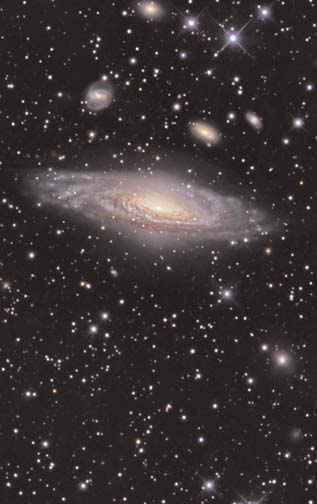
LONDON (TIP): Astronomers have discovered the most distant galaxy known to man to date. They have also confirmed this galaxy was created within 700 million years after the Big Bang, raising interesting questions about the origins and the evolution of the universe. While the Milky Way creates about one or two Sun-like stars every year or so, the newly discovered galaxy, being called z8_GND_5296, forms about 300 a year and was observed by the researchers as it was 13 billion years ago. That’s the time it took for the galaxy’s light to travel to Earth. A single light year, which is the distance light travels in a year, is nearly six trillion miles. Because the universe has been expanding the whole time, the researchers estimate the galaxy’s present distance to be roughly 30 billion light years away. “Because of its distance we get a glimpse of conditions when the universe was only about 700 million years old — only 5% of its current age of 13.8 billion years,” said Professor Casey Papovich from Texas A&M University. University of California, Riverside astronomers Bahram Mobasher and Naveen Reddy are members of the team that has discovered the galaxy. In collaboration with astronomers at the University of Texas at Austin, Texas A&M University and the National Optical Astronomy Observatories, Mobasher and Reddy identified a very distant galaxy candidate using deep optical and infrared images taken by the Hubble Space Telescope. Follow-up observations of this galaxy by the Keck Telescope in Hawaii confirmed its distance.
In searching for distant galaxies, the team selected several candidates, based on their colours, from the approximately 100,000 galaxies identified in the Hubble Space Telescope images taken as a part of the CANDELS survey, the largest project ever performed by the Hubble Space Telescope, with a total allocated time of roughly 900 hours. Using colours to sort galaxies is tricky because some nearby objects can masquerade as distant galaxies. Therefore, to measure the distance to these galaxies in a definitive way, astronomers use spectroscopy — specifically, how much the wavelength of a galaxy’s light has shifted towards the red-end of the spectrum as it travels from the galaxy to Earth, due to the expansion of the universe. This phenomenon is called redshift. Since the expansion velocity (redshift) and distances of galaxies are proportional, the redshift gives astronomers a measure of the distance to galaxies. “What makes this galaxy unique, compared to other such discoveries, is the spectroscopic confirmation of its distance,” said Mobasher. Mobasher said because light travels at about 186,000 miles per second, when we look at distant objects, we see them as they appeared in the past. The more distant we push these observations, the farther into the past we can see. “By observing a galaxy that far back in time, we can study the earliest formation of galaxies,” he said. “By comparing properties of galaxies at different distances, we can explore the evolution of galaxies throughout the age of the universe.”





Be the first to comment